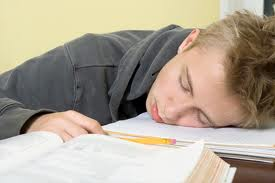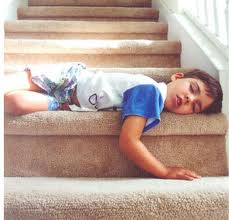 Dreaming is a natural and normal part of children’s lives as they grow and develop. Vivid dreams can appear in children as young as two or three years old. Many preschoolers between four and six years olds have frequent dream recall, and occasionally terrifying nightmares. As children develop cognitively and socially, their dreams become longer, more complex, and more varied in content. Adolescence tends to be a time of intensified dreaming, reflecting the dramatic changes happening in their minds and bodies.
Dreaming is a natural and normal part of children’s lives as they grow and develop. Vivid dreams can appear in children as young as two or three years old. Many preschoolers between four and six years olds have frequent dream recall, and occasionally terrifying nightmares. As children develop cognitively and socially, their dreams become longer, more complex, and more varied in content. Adolescence tends to be a time of intensified dreaming, reflecting the dramatic changes happening in their minds and bodies.
Possible Functions
In The Interpretation of Dreams (1900), Sigmund Freud observed that children’s dreams are often simpler than adults’ dreams—shorter, less inhibited, more directly expressing our instinctual desires. Because of this “uncensored” quality, Freud saw children’s dreams as especially helpful in showing how dreaming can lead to a deeper understanding of the human mind. In their dreams, we can catch glimpses of the primal forces of the psyche that influence all later mental functioning.
C.G. Jung also emphasized the deep psychological wisdom of children’s dreams. From Jung’s perspective, children are capable of greater insight into the collective unconscious because their minds have not yet been molded by adult society in ways that limit, discourage, or even reject the possibility of such insights. Before those cultural boundaries are imposed, children’s dreams are free to express profound truths by means of archetypal symbols—extremely vivid, highly memorable images that have little or no relation to current waking life, but rather come from a collective realm of human psychological experience. According to Jung, the capacity for “big dreams” with archetypal symbolism is innate in every child.
Several other psychologists have helped us better understand the nature and possible functions of children’s dreams. For instance, Jean Piaget and David Foulkes both showed how children’s dreams have more cognitive structure and developmental regularity than either Freud’s or Jung’s theories would suggest. Many psychotherapists and educators, such as Denyse Beaudet, Alan Siegel, and Kate Adams, have found that dreams enable children to express feelings and ideas they cannot put into spoken language. Dreaming helps children process their daily experiences with their bodies, families, friends, school, and the broader culture. Perhaps most importantly, it gives them a totally free and private space in which their growing minds can play, explore, reflect, and exercise their creative imaginations. For anyone involved in the care and education of children, dreams can be a powerful resource and valuable ally.
Practices for Talking with Children about Dreams
Here are four simple practices that can help you talk with children about their dreams.
- Listen respectfully, and ask open-ended questions. Show interest in every detail of the dream. When the child is ready to let the conversation drop, let it drop.
- Don’t “interpret” the dream in the sense of trying to translate it into a rational message. Rather than you leading the child out of the dream, encourage the child to lead you into it.
- Play with the dream, using whatever materials and methods are available: drawing or painting special images, enacting scenes with dolls and action figures, performing and dancing the movements of the dream, creating poems and songs. Don’t worry if the artistic process wanders from the original dream; this kind of playful creative flow is a version of what Jung has called “dreaming the dream onward.”
- Suggest the child think of other possible scenarios for future dreams. For example, if you had the same kind of dream again, would you do anything differently? Would you try to act differently, or look more closely at something? This does not necessarily mean trying to become lucid, although it can. At a deeper level, it’s a way of stimulating an ongoing dialogue between children’s dreams and their waking minds. With timely encouragement from caring adults, this dialogue can become a lifelong resource of insight and guidance.
Note: this post first appeared in Psychology Today, May 24, 2021.


 To summarize the results of the word search analysis so far:
To summarize the results of the word search analysis so far:
